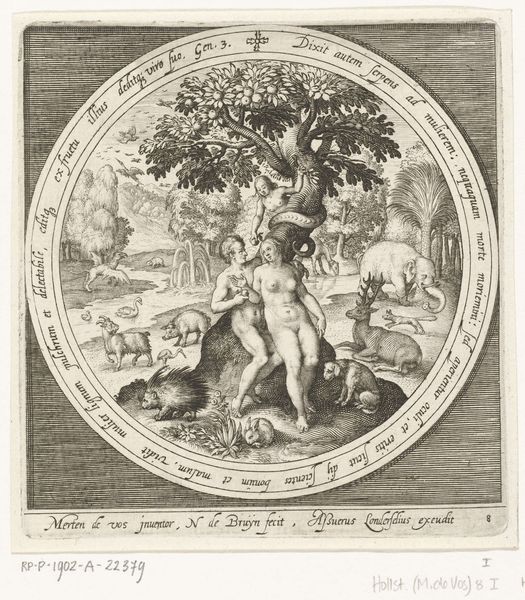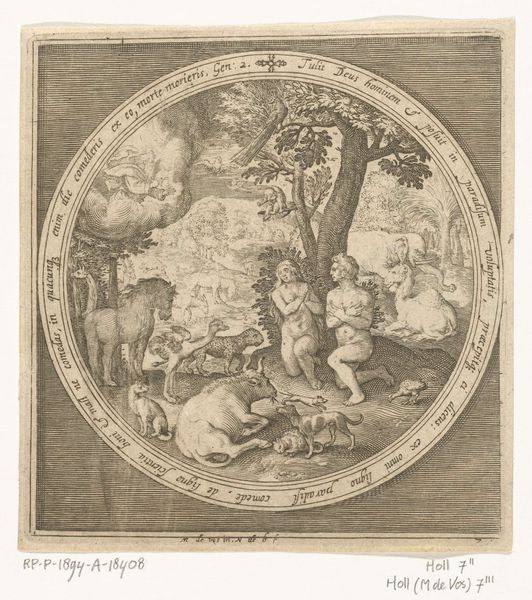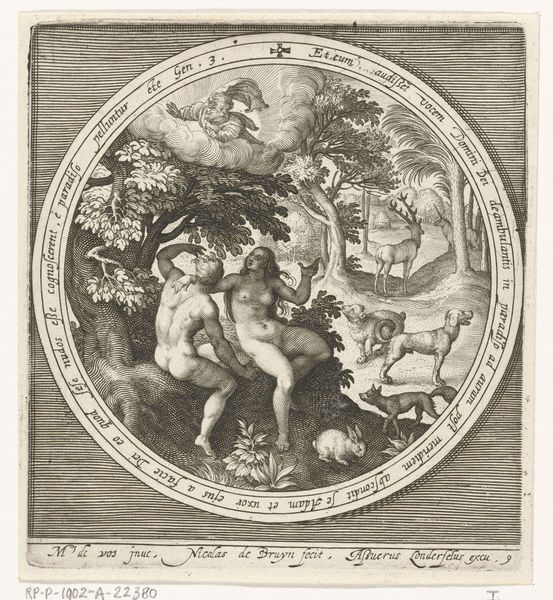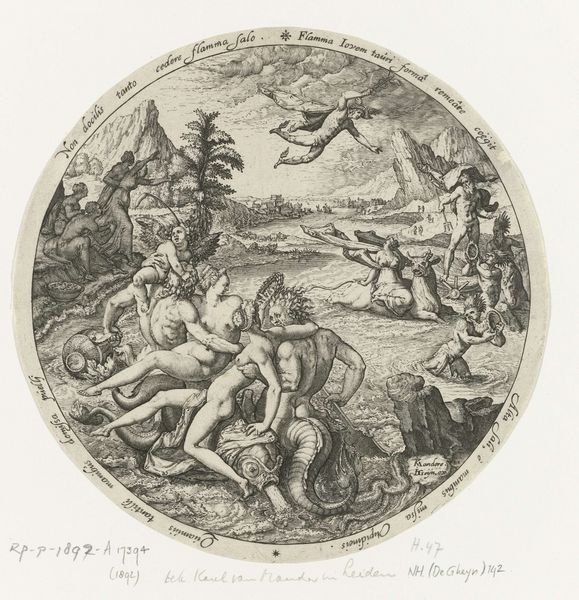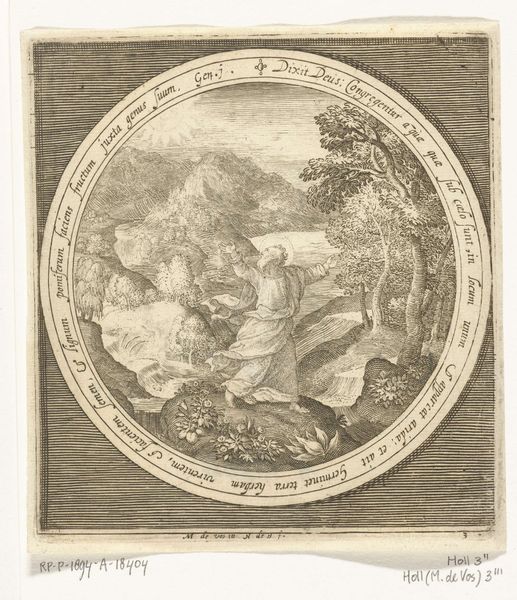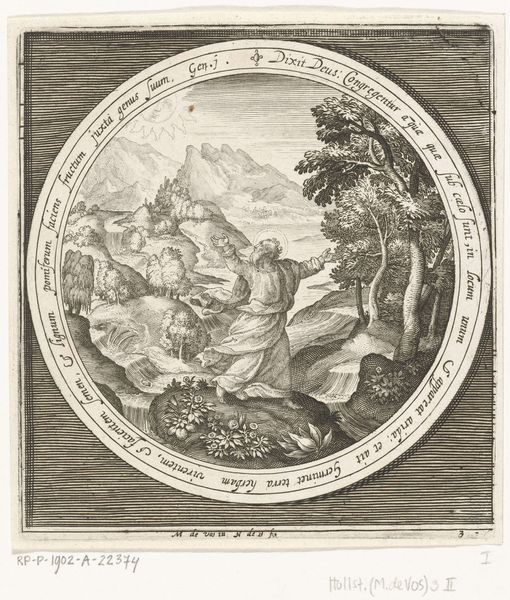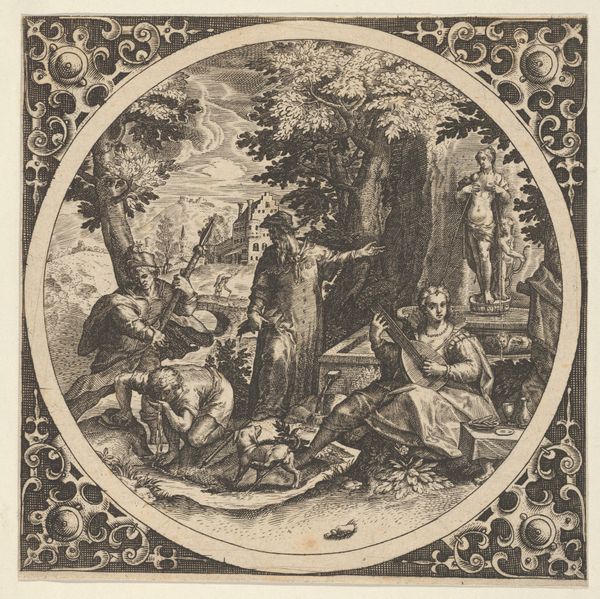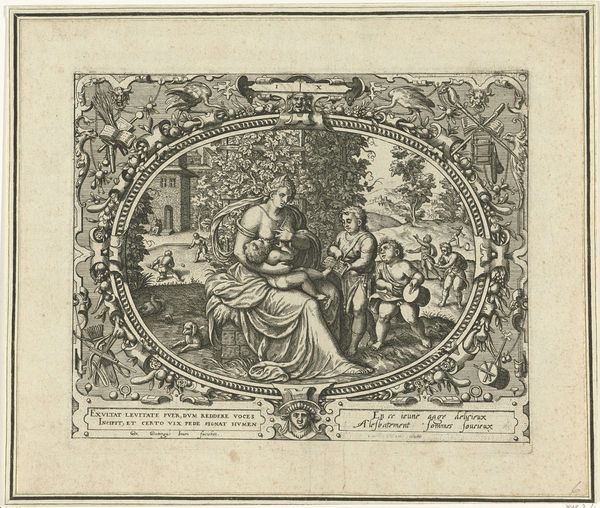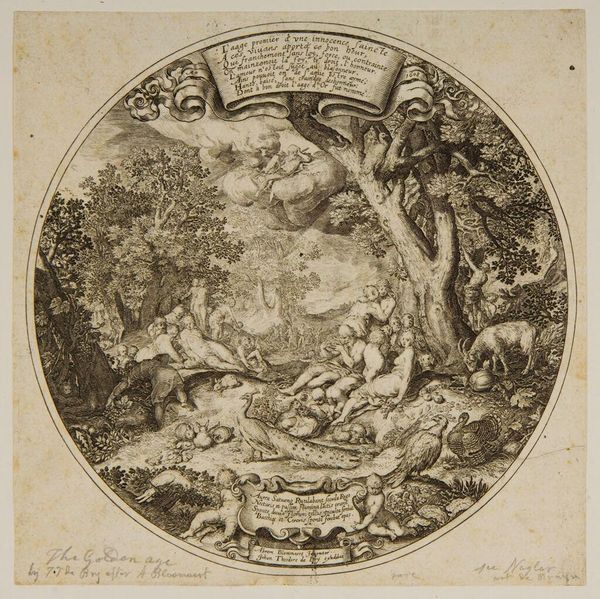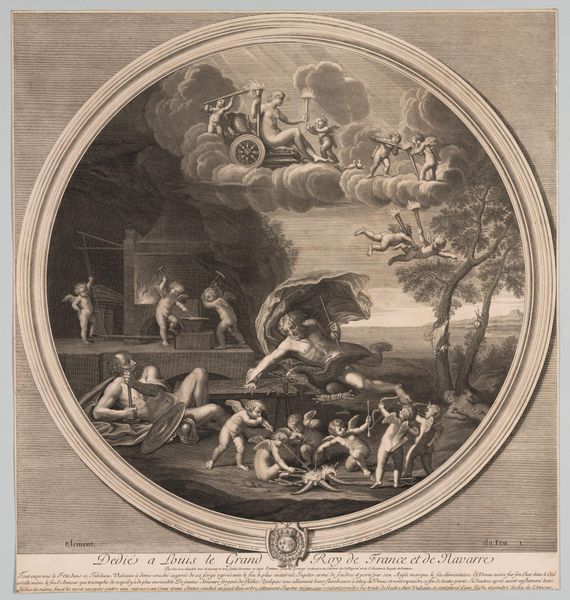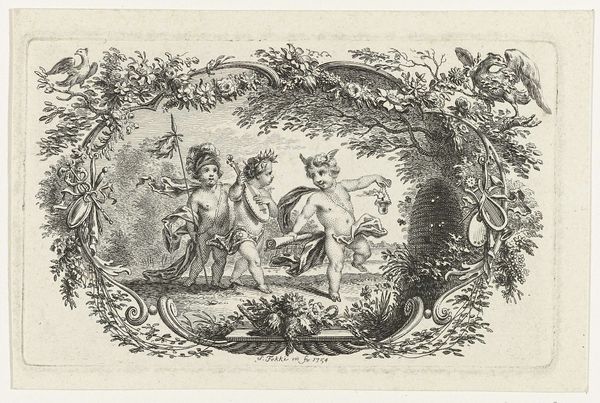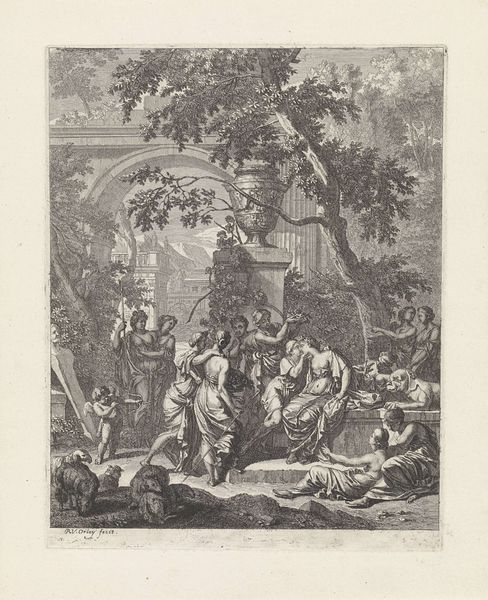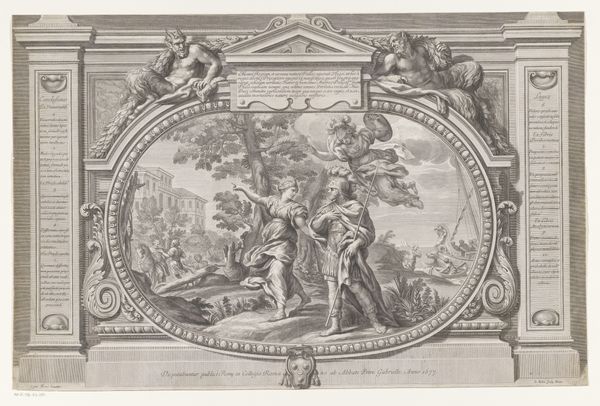
Zesde dag van schepping: God schept de dieren en Adam en Eva 1581 - 1656
0:00
0:00
nicolaesdebruyn
Rijksmuseum
engraving
#
narrative-art
#
old engraving style
#
landscape
#
figuration
#
history-painting
#
northern-renaissance
#
engraving
Dimensions: height 136 mm, width 128 mm
Copyright: Rijks Museum: Open Domain
Nicolaes de Bruyn made this print, ‘The Sixth Day of Creation,’ in the early 1600s using an engraving technique. This involved meticulously carving lines into a metal plate, inking it, and then pressing it onto paper. While printmaking is often seen as a reproductive medium, look at the sheer amount of work that went into this small, circular image. Every tiny line contributes to the overall effect, from the shading on Adam's reclining body, to the fur on the many animals that inhabit the Garden of Eden. Consider the social context: prints like this made art accessible to a wider audience, functioning as both devotional images and as a form of knowledge dissemination. In the early modern period, these prints served as a powerful tool, spreading ideas and stories to a growing public. Ultimately, by considering the materials, making, and context, we gain a deeper appreciation for the artistic skill and the social role that prints played in early modern Europe.
Comments
No comments
Be the first to comment and join the conversation on the ultimate creative platform.
